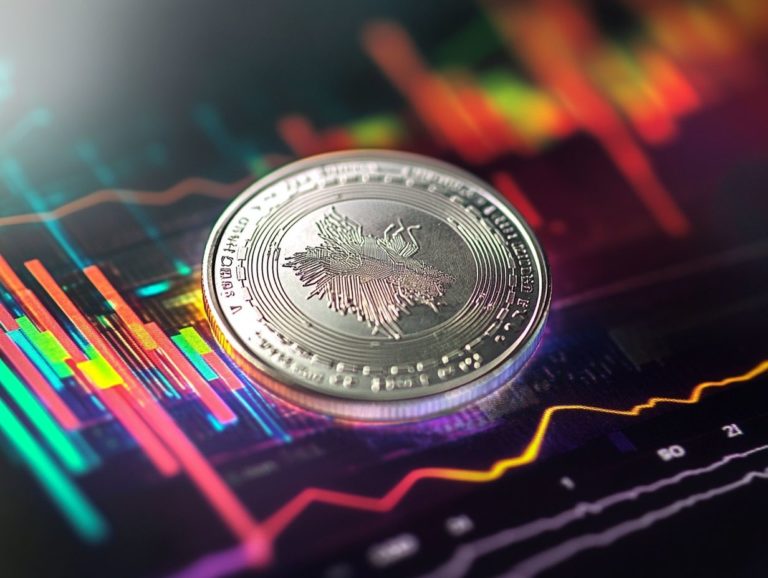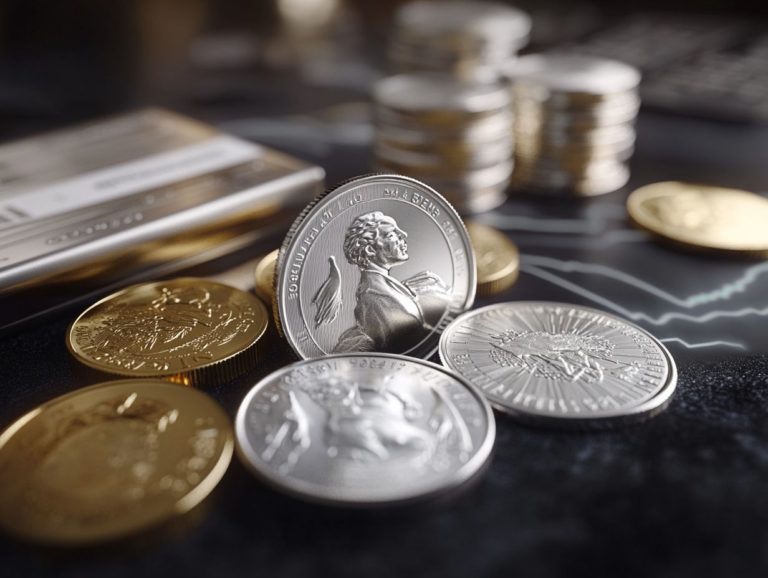Gold Market Analysis: Key Drivers to Watch
The gold market has consistently served as a barometer of economic health and investor sentiment. It is intricately woven into the fabric of global dynamics.
This article delves into the key drivers currently influencing the gold market. It examines factors like supply, demand, inflation, and interest rates.
You ll also explore the effects of geopolitical tensions and technological innovations, including advancements in mining and the emergence of digital gold.
Join us as we dive into expert forecasts and unveil what the future holds for this precious metal.
Contents
- Key Takeaways:
- Overview and Importance
- Key Drivers of the Gold Market
- Macroeconomic Factors to Monitor
- Technological Innovations Impacting the Gold Market
- Future Outlook and Predictions for the Gold Market
- Frequently Asked Questions
- What are the key drivers that impact the gold market?
- How do economic factors affect the gold market?
- What role do geopolitical events play in the gold market?
- How does inflation impact the gold market?
- Why do interest rates have an impact on the gold market?
- What is the role of central bank policies in gold market analysis?
Key Takeaways:
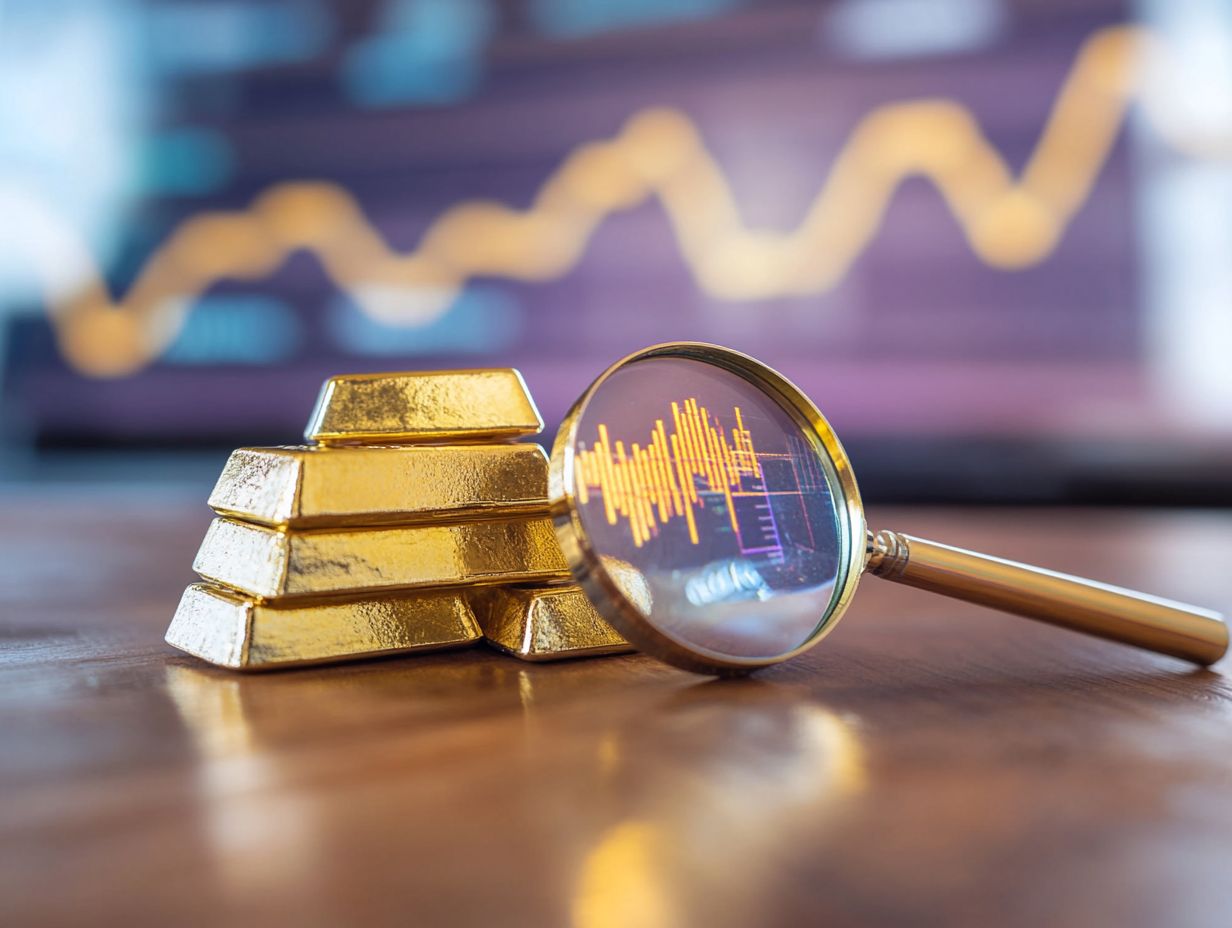
- Supply and demand are key drivers of the gold market, influenced by factors such as mining production and economic uncertainty.
- Macroeconomic factors like inflation, interest rates, and geopolitical tensions can significantly impact the price of gold.
- Technological innovations, such as advancements in mining and digital gold, are also important factors to watch in the gold market.
Overview and Importance
The overview of gold as an investment asset underscores its vital role in the financial markets, especially during periods of economic expansion and uncertainty. Gold is often seen as a safe place to invest during economic uncertainty, making it an appealing option for those seeking to stabilize their portfolios amid volatility and inflation.
As an investor, you ll want to keep a close eye on gold s performance and pricing. This significantly influences market sentiment and shapes expectations about future economic conditions.
Key Drivers of the Gold Market
To truly grasp the key drivers of the gold market, you must consider a variety of factors: demand, supply, and the geopolitical factors that influence price stability.
Central banks play pivotal roles in this arena. Their monetary policies and investment flows can significantly shape gold prices. A keen market analysis illustrates how geopolitical uncertainties often drive investors toward gold, viewing it as a safe haven to protect their portfolios.
Factors Affecting Supply and Demand
Factors influencing the supply and demand for gold include consumer demand from jewelry markets, especially in countries like India and China. Additionally, trading activities shaped by Asian investment trends are pivotal in shaping the overall dynamics of the gold market.
Fluctuations in global economic conditions, including inflation rates and currency valuations, significantly impact how investors view gold as a safe haven. Regions with a strong cultural affinity for gold, such as the Middle East, further elevate demand, leading traders to recalibrate their strategies accordingly.
Investment trends in Asian markets are increasingly leaning toward gold-backed financial products. This creates a ripple effect on prices and availability. By grasping these interconnected factors, you gain valuable insights into not only the immediate market landscape but also potential future movements in gold prices.
Macroeconomic Factors to Monitor
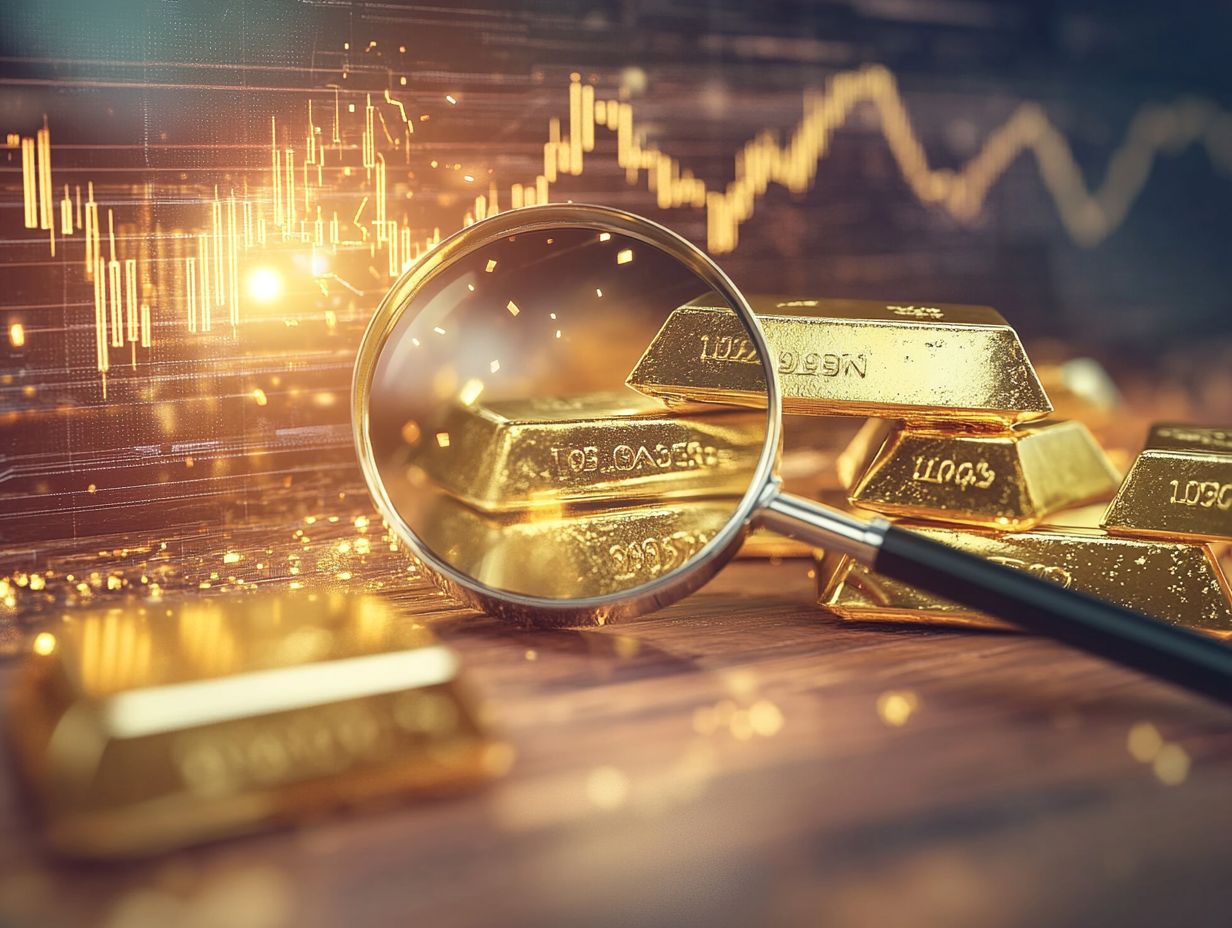
Monitoring macroeconomic factors like inflation and interest rates is essential for you as an investor in the gold market. These elements have a direct impact on economic conditions and financial markets.
The monetary policies set by central banks frequently dictate interest rate movements. This consequently influences gold’s allure as an investment, especially during periods of rising inflation. Staying attuned to these dynamics will empower you to make informed decisions in this ever-changing landscape.
Inflation and Interest Rates
Inflation and interest rates are crucial indicators in the gold market. When inflation rises, the demand for gold typically increases, as it is viewed as a safeguard against losing the ability to buy things.
On the flip side, higher interest rates can make gold less attractive, as investors often gravitate toward yielding assets investments that generate income rather than non-yielding gold.
This intricate interplay between these economic factors can greatly influence how you, along with institutional investors, allocate your portfolios.
For instance, when inflation accelerates, it not only enhances gold’s allure but also drives you to seek safe-haven investments during uncertain times.
When central banks raise interest rates to combat inflation, holding gold can become costly. This might lead to a drop in gold prices, making it crucial to understand these economic shifts.
Therefore, understanding the relationship between inflation, interest rates, and gold is essential for anyone navigating the complex investment landscape.
Geopolitical Tensions and Economic Uncertainty
Geopolitical tensions and economic uncertainty wield considerable influence over market sentiment and trading activities in the gold market. When risks heighten, you may find that investors flock to gold as a safe-haven asset, which drives up demand and consequently, prices.
History has consistently illustrated this pattern; during various global conflicts and financial crises, gold has emerged as a reliable store of value amid the chaos.
Take, for instance, the 2008 financial crisis and the more recent pandemic both periods saw a notable surge in gold purchases as fears of economic instability took hold.
Current events, including geopolitical confrontations and persistent inflationary pressures, continue to shape investor perspectives. This environment makes many rethink their investments and consider gold as a protective measure.
In this ever-evolving landscape, adapting your approach becomes essential for effectively navigating the volatile market.
Technological Innovations Impacting the Gold Market
Technological innovations are revolutionizing the gold market, enhancing mining efficiency and ushering in digital gold solutions like blockchain technology, a secure way to record transactions online. These advancements not only refine production processes but also open up new investment opportunities, offering you greater accessibility and liquidity in the gold market.
Advancements in Mining and Production
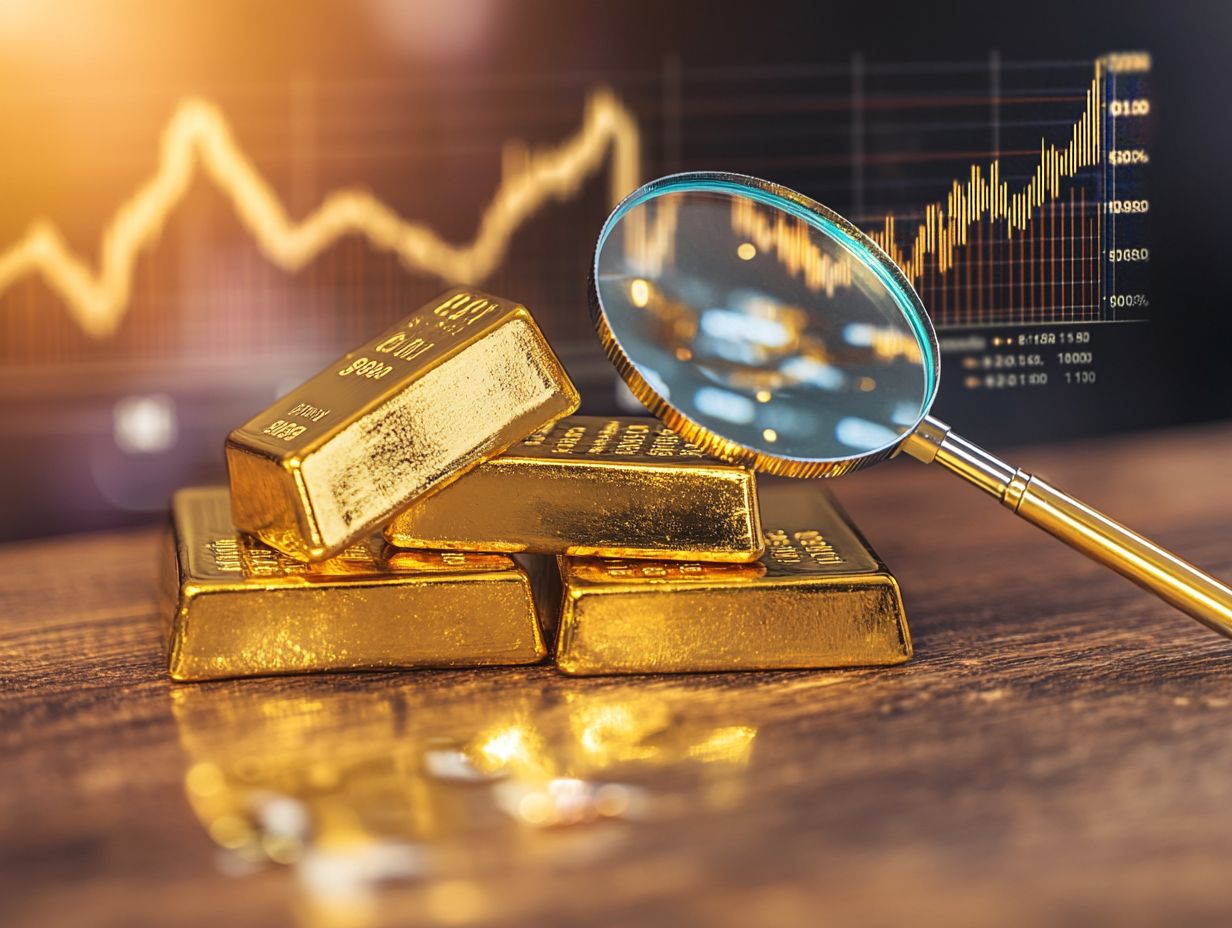
Advancements in mining and production techniques have significantly increased efficiency and reduced costs in gold extraction, ultimately reshaping supply dynamics in the gold market.
These innovations are essential for meeting the rising demand for gold while keeping price stability intact.
By integrating cutting-edge technologies, such as automation and data analytics, you can streamline your operations, minimizing waste and maximizing yield.
Enhanced mineral processing methods not only optimize the extraction process but also lessen the environmental impact of mining activities. This positions producers to respond swiftly to market fluctuations, ensuring a more stable supply chain.
Adopting this proactive approach not only strengthens your competitiveness in the marketplace but also promotes a sustainable model for future gold production.
Digital Gold and Blockchain Technology
The rise of digital gold and blockchain technology is revolutionizing the way you interact with gold, opening up seamless trading and investment opportunities. This innovation represents a modern approach to investing in gold, providing you with increased transparency and security.
By enabling fractional ownership, gold has become accessible to a broader audience, allowing you to diversify your portfolio without the traditional barriers that have long been associated with physical gold investments.
Blockchain technology adds a layer of credibility to your transactions, as each trade is recorded in an immutable ledger, fostering greater confidence in your investments.
This shift not only democratizes access to gold but also streamlines trading practices, making transactions quicker and reducing fees.
As more individuals and institutions recognize these benefits, the allure of digital gold continues to grow, shaping a future where investing in precious metals is as effortless as clicking a button.
Future Outlook and Predictions for the Gold Market
The future of the gold market is influenced by a mix of expert predictions, carefully analyzing current trends while anticipating potential market fluctuations.
You ll want to consider that factors such as economic growth, central bank policies (which are the regulations set by national banks to control the money supply), and geopolitical tensions will significantly shape gold’s path in the years ahead. Keeping an eye on these elements can provide invaluable insight into how the market may evolve.
Expert Forecasts and Analysis
Expert forecasts and analyses of the gold market offer you invaluable insights into potential price movements and investment strategies you can explore. By evaluating economic conditions and historical trends, you can identify opportunities to enhance your portfolio returns.
These analyses typically encompass factors such as inflation rates, geopolitical tensions, and central bank policies, all of which play critical roles in shaping gold price dynamics. As a safe-haven asset, gold often garners attention during periods of market volatility. Understanding these forecasts helps you make better decisions.
Informed investors like you can tailor strategies accordingly, whether it involves direct purchases of bullion, gold ETFs (which are investment funds that trade like stocks and invest in gold), or mining stocks. Ultimately, leveraging expert insights gives you the power to take more calculated risks, unlocking the potential for optimized gains in an ever-fluctuating market.
Frequently Asked Questions
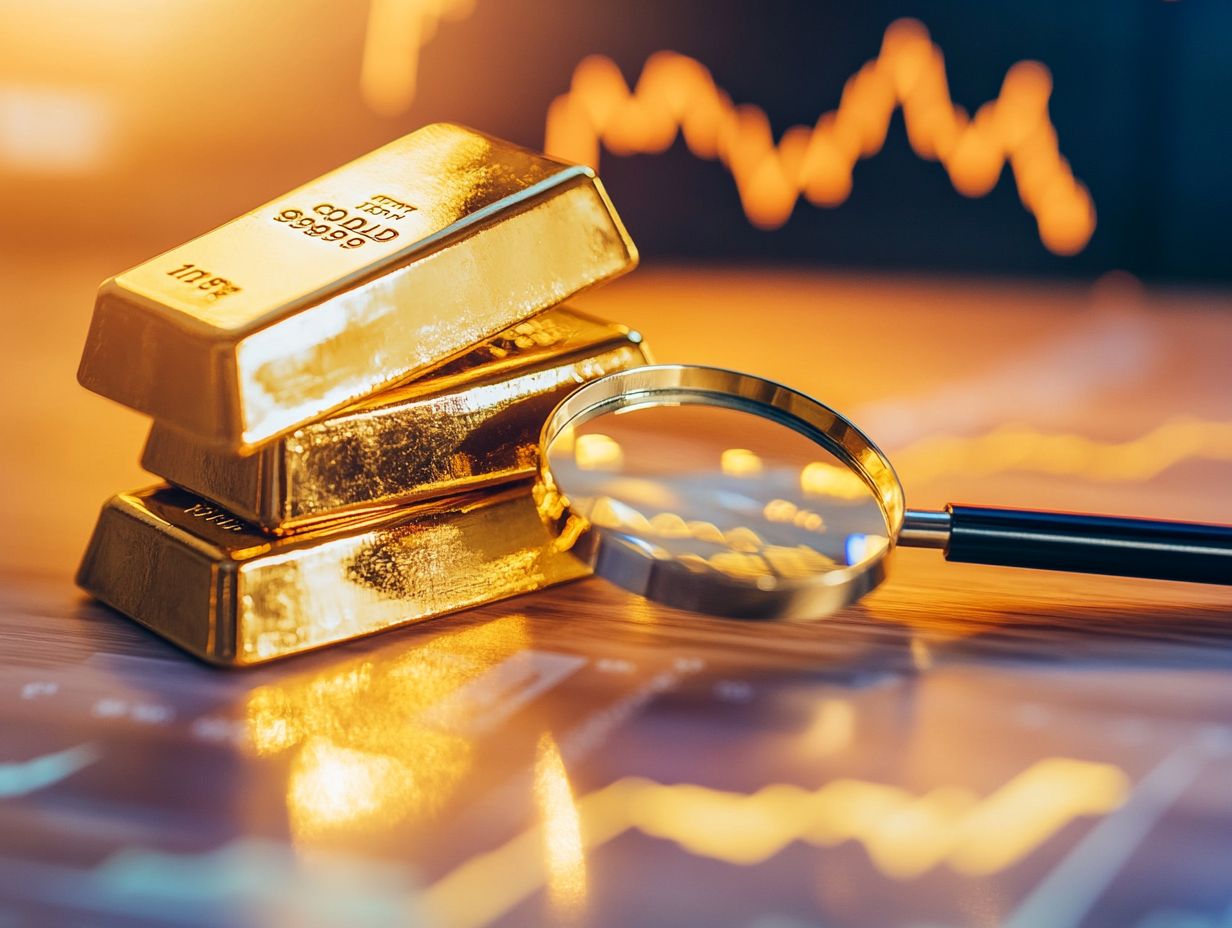
-
What are the key drivers that impact the gold market?
The key drivers include economic factors, geopolitical events, inflation, interest rates, currency movements, and central bank policies.
-
How do economic factors affect the gold market?
Economic factors such as GDP growth, unemployment rates, and consumer confidence can influence the demand and supply for gold, thus impacting its price.
-
What role do geopolitical events play in the gold market?
Geopolitical events such as political tensions, wars, and trade disputes can create uncertainty and volatility in the market, making gold a safe haven for investors.
-
How does inflation impact the gold market?
Inflation erodes the value of fiat currency, making gold a desirable asset for hedging against inflation. As inflation rises, the demand for gold increases, driving its price up.
-
Why do interest rates have an impact on the gold market?
Gold is a non-interest-bearing asset. When interest rates rise, investors may prefer to invest in assets that offer a return, resulting in a decrease in demand for gold.
-
What is the role of central bank policies in gold market analysis?
Central banks hold significant amounts of gold reserves and can influence the market through their buying and selling activities. Changes in these policies can impact supply and demand for gold, affecting its price.
Stay informed and ready to make the most of your investments in gold!










